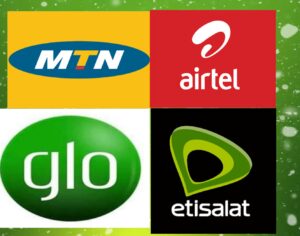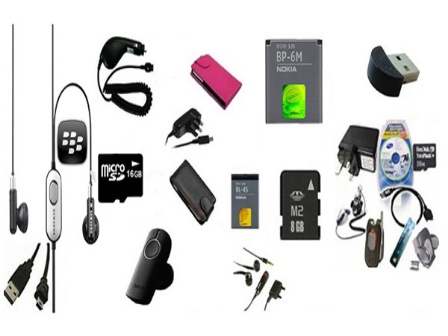How To Reduce Data Consumption On All Network In Nigeria
How To Reduce Data Consumption On All Network In Nigeria. Are you tired of subscribing to data every day? Do you know there is a way to reduce my network usage? Are you aware that you can stop your data from running so fast? If you wish to know how to stop your phone from consuming much data, then this article is for you.

Introduction
Data bundles have become an essential part of everyday life because of the growth of smartphones and other Internet-enabled gadgets. During the lockout, many Nigerians upped their data consumption, according to some internet chatter. Many service providers have consistently slashed the cost of data packages in their ever-raging data battles over the last few years. ‘ Since these bundles no longer last as long as they formerly did, there have been a lot of complaints.
According to Nigerian Communications Minister Dr Isa Pantami (August 2019), the Nigerian Communications Commission (NCC) was tasked with investigating illicit data deductions. Regulators haven’t punished anybody for data depletion difficulties nine months later, according to a recent study, although reports of quick data depletion during the shutdown have increased recently.
Data use has grown significantly in Nigeria during the last several years. People have complained about using more than 10GB of data in less than three days without any intensive activity like downloading or streaming. The reality is that most consumers are unaware of how much data their mobile devices use “behind the scenes”.
Read also: All Airtel data plans, prices and subscription codes
What is Internet Data Consumption?
Service providers supply internet data to end consumers so they may connect to the internet. The consumer’s ability to carry out a wide range of activities relies on the kind of technology they are using. In order to classify access technologies into “generations,” they are sometimes referred to as “generations.”
MTN, Glo, Airtel, and 9mobile are Nigeria’s four biggest mobile phone providers, as we all know. It’s not true that data from one network lasts longer than data from another; they’re all the same length of time. Then there’s the rumour that this form of data is more durable than this (both being the same size and network). Also, it isn’t the case.
How does my network provider figure out how much data I’ve consumed?
The amount of data we use on the Internet is directly proportional to the amount of time we spend on it. There are some Internet activities that will use more data than others, regardless of your service provider. All file transfers, exchanges, and receiving of files are taken from your data subscription’s available data balance.
Due to the fact that this is done in real-time, it is simple to get into the habit of keeping tabs on one’s eating habits. The National Communications Commission (NCC) estimates the cost of one hour’s data use for each of these activities.
Tips on how to reduce data consumption
1. Use Wi-Fi to share huge files
Wi-Fi should be used whenever feasible, especially when transferring big files. Wi-Fi is available on smartphones and other mobile devices. By connecting to a nearby wireless network, you may limit the amount of data you consume at your home, business, or other location (s). In order to connect automatically to a secure Wi-Fi network when you arrive at your home or business, you may change your settings to allow for this.
Your mobile phone’s cellular data may be switched off and preserved after you’ve connected to the Internet. When you’re downloading or exchanging enormous files, Wi-Fi is a lifesaver. Your smartphone’s memory may be rapidly depleted by large files. In this case, it pertains to automatic upgrades of software. If you want to keep your data use down, it’s best to undertake these large consumptions when connected to secure Wi-Fi.
2. Set a data use limit and/or set up notifications to let you know when you’ve over it
Most Android devices include built-in data monitors. You can monitor your data use using this feature, which can be found in the phone’s settings menu. You can monitor how much data each of your smartphone’s applications is taking with this function, allowing you to identify the ones that you need to keep an eye on. This feature is not available on all devices and may need the installation of an app in order to view how much data has been utilized by each program on other devices, such as Apple’s IOS.
As a result of this information, you may set up data use restrictions and notifications to monitor your consumption. Additionally, you have the option of limiting or removing data access for resource-intensive applications.
3. Stick to the mobile version of a website is the best option
Instead of utilizing applications for platforms like YouTube, Facebook, or your favourite sports site or gossip blog, use the mobile site instead to conserve gigabytes when surfing on your smartphone. To achieve this, type www.m. before a website’s URL in the browser’s address bar to go to the mobile version. The visitor may also be sent to a desktop version by certain websites. As an alternative, you may always opt-out and stick to the app on your phone.
4. Disable Updates
It’s common for Android devices to automatically update applications in the background while you’re connected to a Wi-Fi hotspot, as well as when you’re using your mobile connection, which may significantly boost your data use. The Google Play Store’s auto-update feature may be disabled by going to Settings->Auto-update applications and setting the apps to only be updated while connected to Wi-Fi
5. Compress your data
Compressing data on your smartphones and other devices may be done using a variety of free and paid tools. Some of them may go so far as to increase your data allowance. Using Google’s Chrome browser, for example, you may save a large amount of data use. To save your data, Google recommends that you route all of your online surfing via Google’s servers, which compress and optimize the data before sending it back to your phone or tablet. Set it up on the Settings page and it will save you from always running out of data.
6. Streaming might be risky, so use care
Streaming content accounts for a large portion of data use. You may lose a significant amount of data in an hour if you’re streaming HD video, for example. When it comes to listening to music or seeing high-quality photographs or GIFs on Instagram and other social media platforms, the same rules apply. You should use care while streaming material in order to save your data consumption.
7. Minimize YouTube Data Usage
YouTube is a key source of pleasure, education, and even news for many internet users. However, the more high-quality videos you view on your phone, the more data your phone will need. This will only enable you to view HD videos while you are connected to Wi-Fi, but you will get accustomed to the difference sooner than you think if you utilize the YouTube app’s settings.
Read also: All Glo data plans, prices and subscription codes
How to set up a limit for data usage
- Go to “settings”
- Go to “network & internet”
- Go to “Data usage”
- Go to “data warning and limit”
- Go to “set data limit”
Set preferred data limit usage e.g. 2GB
You may set a limit for how much data you want to use on your mobile phone.
How to set up Data Saver
- Go to “settings”
- Go to “network & internet”
- Go to “Data usage”
- Go to “data saver” and activate the use of Data saver
As a result, some applications are unable to transmit or receive data when running in the background. Only Android 7.0 and above may use this feature.
How to disable auto-update
Android devices
- Go to the google play store app
- Go to “settings”
- Go to “auto-update apps”
- Select “Don’t auto-update apps”
Apple devices
- Go to the “settings” app in iOS
- Go to “General”
- Go to “automatic updates/Background App refresh
- Toggle the switch position to the “OFF” position to disable
Read also: How to start data reselling business in Nigeria
Conclusion
In order to reduce your data use, you should follow the methods outlined above and keep an eye on your usage. Keep an eye out for future postings that detail how to carry out the aforementioned procedures.
We Believe This Article Was Helpful, Don’t Hesitate To Share This Information With Your Friends On Facebook, Twitter, Whatsapp and Google plus.
Copyright Warning: Contents on this website may not be republished, reproduced, redistributed either in whole or in part without due permission or acknowledgement. All contents are protected by DMCA.
The content on this site is posted with good intentions. If you own this content & believe your copyright was violated or infringed, make sure you contact us via This Means to file a complaint & actions will be taken immediately.



